My quest to find 200 species in Peterborough County in 2020
For a long time now, I’ve taken a degree of pride in no longer being a “lister”, namely a birder who’s obsessed with adding new species to their list. Well, I’ve had to eat crow this year. An impassioned quest to find 200 species in Peterborough County in a single calendar year has consumed me since late April.
In the pre-pandemic times of last winter, tallying a big list of birds for 2020 couldn’t have been further from my mind. I was away from mid-February to mid-March and had only submitted a handful of checklists to eBird – an online tool to record and share sightings – in the weeks prior to our departure. Even upon returning on March 21st, our compulsory two-week self-isolation meant that watching backyard birds was the only option.
When I could finally leave the house in early April, I started birding more regularly. Social distancing, of course, was top of mind. Although I still had no particular goal in mind for the year, I did begin submitting checklists more regularly. Then came the “Birding at Home Challenge”, organized by the Ontario Field Ornithologists. The idea of the event was to see how many birds you could find in your own yard and nearby locales between April 26 and June 30. The participation by local birders was the highest in the province. The number of species recorded (148) was surpassed only by Bruce County (179). I found all of this hugely motivating. An extremely rare yellow-crowned night-heron also turned up in late April, attracting a multitude of birders and reigniting the passion for listing that I hadn’t felt for 30 years. By month’s end, I was up to 57 species.
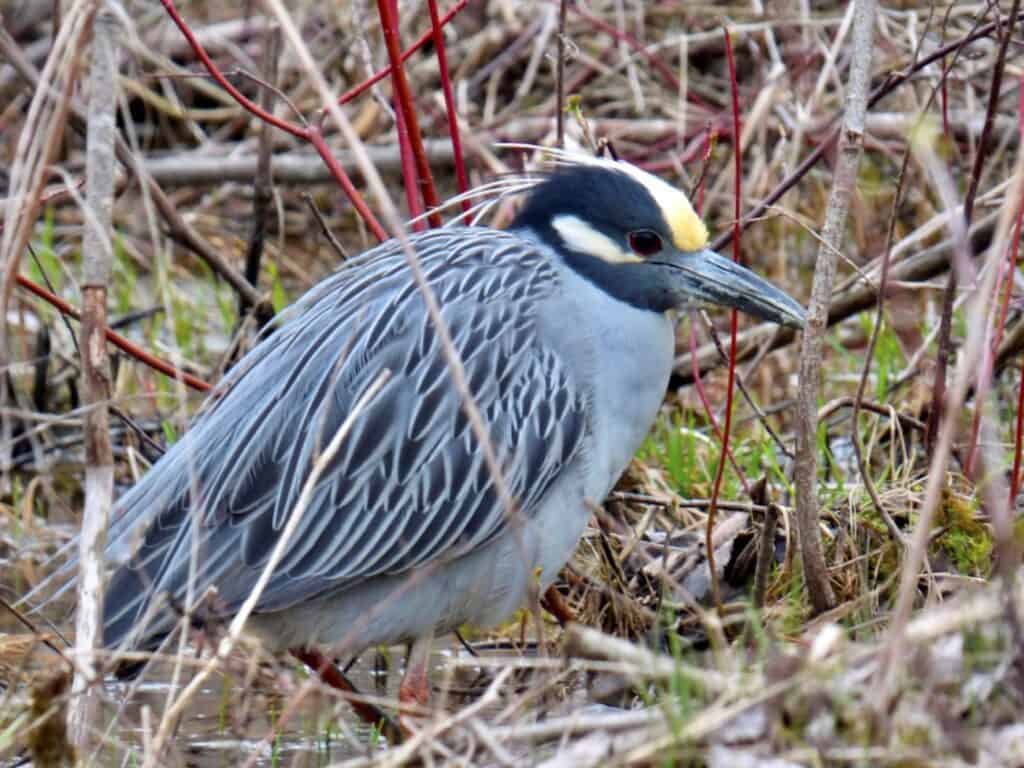
I’m not sure when the goal of finding reaching 200 took hold but being out birding nearly every day was great fun. I don’t think I’d ever birded this much. Because eBird allows you to see other people’s checklists (with location) and sends you alerts of birds you need for the year, it was relatively easy to go out and find a given species. The app also shows you other people’s totals, which creates an element of competition. Having started so late in the year, there was no way I was going to be near the top of the species list, but I still wanted to make a respectable showing.
May is synonymous with birding at its best. Not only do the bulk of our summer birds return at this time, but species that only pass through the Kawarthas are also up for grabs. I was adding new species almost every day and had a front row seat to all of the changes in the natural world that May provides. Initially, I thought I would really miss my annual trip to Point Pelee National Park (closed because of the pandemic), but I almost forgot about it. I was seeing nearly all of the birds I would have seen at Pelee anyway. There was also a lot more satisfaction in observing them right here in Peterborough County.
May produced my highest monthly total — 128 species of which 80 were new for the year. Among the most memorable birds were blue-gray gnatcatchers on Mervin Line near the airport, a least bittern at Loggerhead Marsh near Ireland Drive, a pair of red-headed woodpeckers on Duncan’s Line, a rare orchard oriole on Indian Line on Rice Lake, a blackpoll warbler at Lakefield Marsh, and a hard-to-find blue-winged warbler on Jones Quarter Line. By month’s end, I was up to 143.
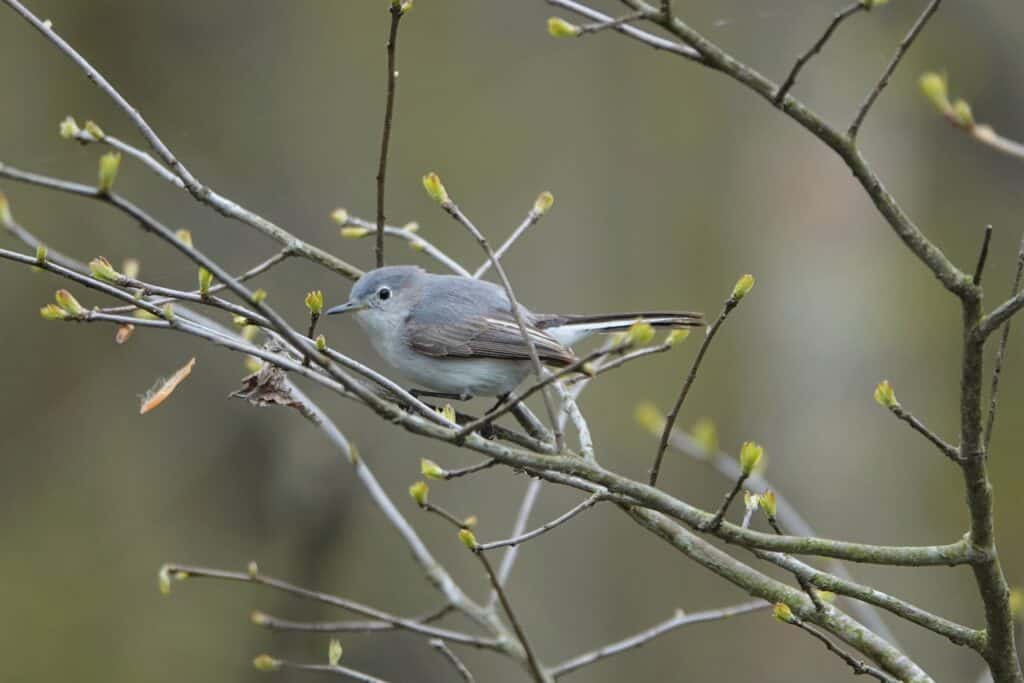
Blue-gray Gnatcatcher 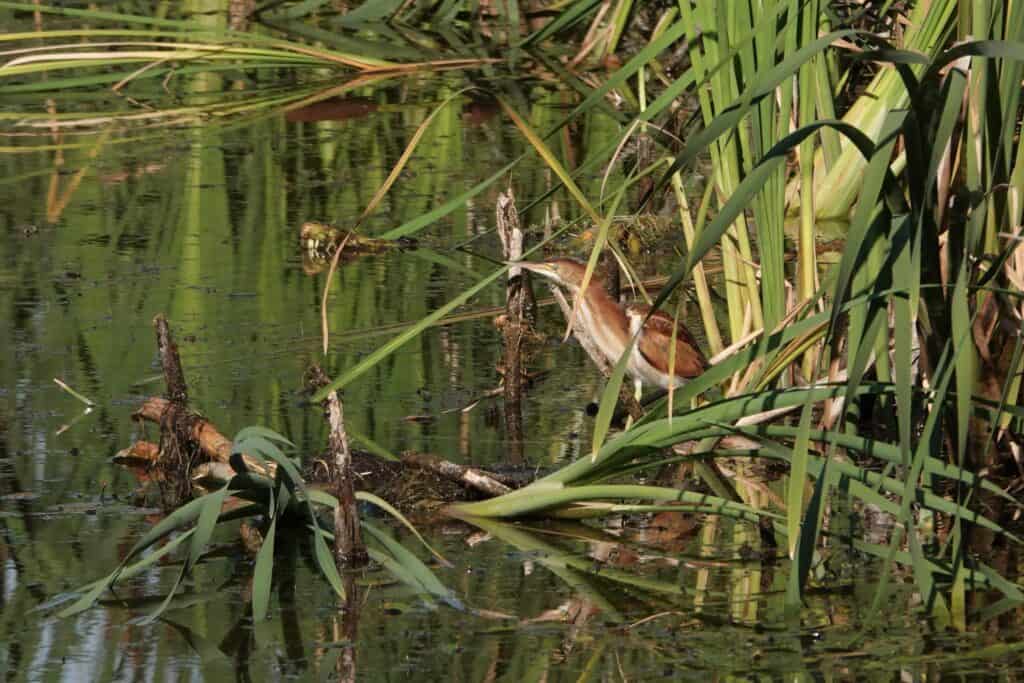
Least Bittern 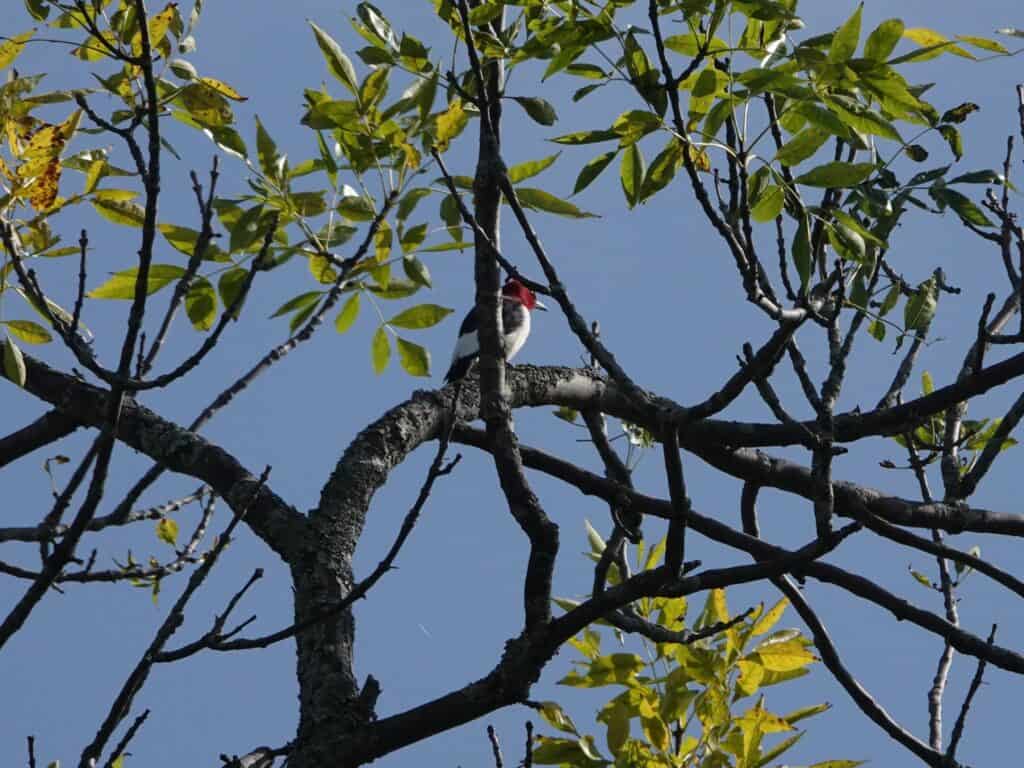
Red-headed Woodpecker 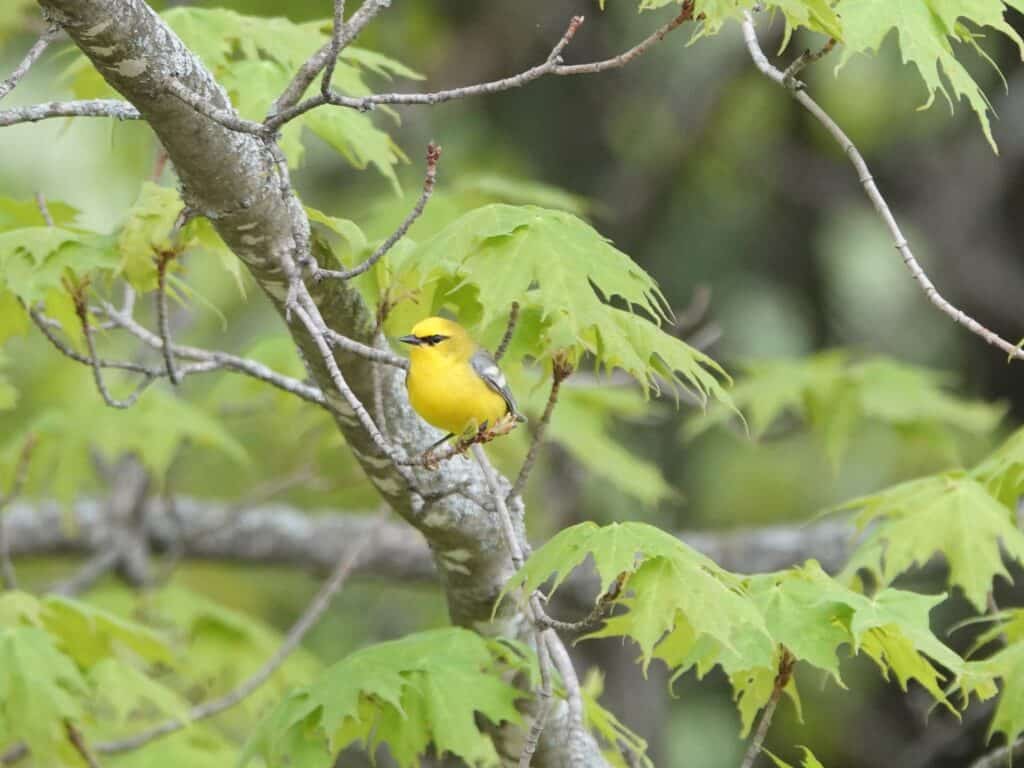
Blue-winged Warbler
Summer
With June comes the end of migration, and new birds are harder to find. Although I recorded 100 species, only 22 were new ones. However, June still provided some wonderful sightings. Top among these was a cerulean warbler – a threatened species – on Deer Bay Road. The section of the Lang-Hastings Trail at Cameron Line was also a very productive destination. It’s hard to exaggerate the beauty and serenity of this trail on an early morning in June.
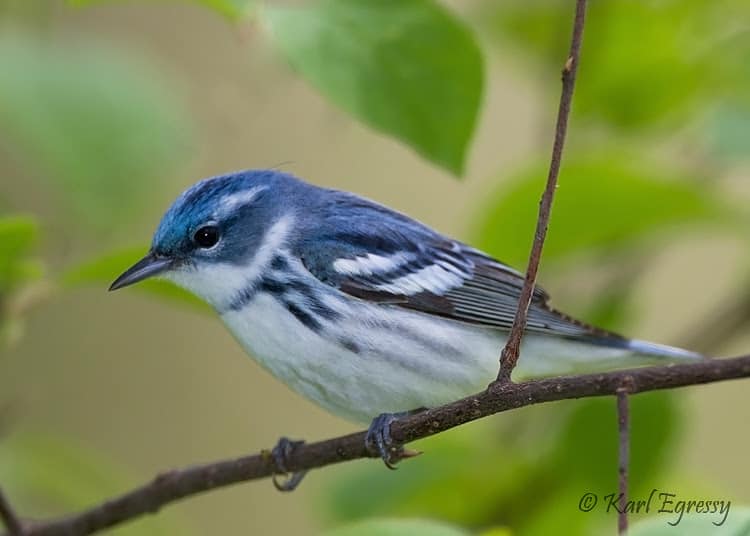
July is probably the least productive month of the year for birding. This year, I also had other priorities and the heat was oppressive. Although I only had one new sighting, it’s one I won’t soon forget. My friend Mitch Brownstein and I observed four baby peregrine falcons at their cliffside nest on Anstruther Lake. We sat in his boat for nearly an hour, listening to their clamor and feeling privileged to get great views of such an iconic species.
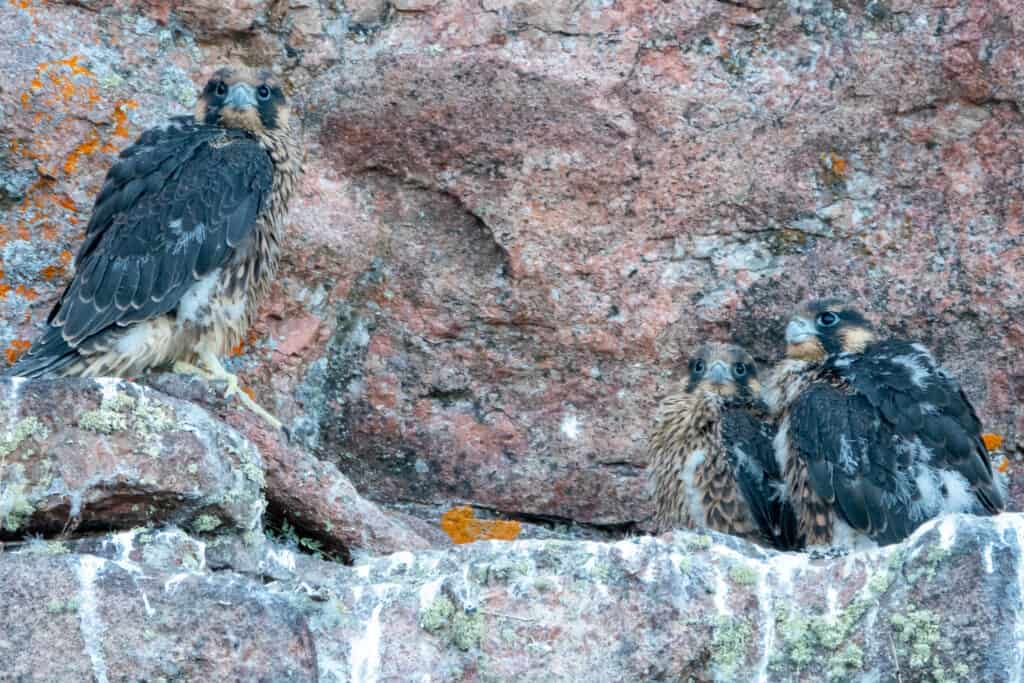
While August offered no respite from the heat, birds were on the move again as fall migration kicked into gear. It always happens earlier than most people realize. With migrants from northern Ontario passing through, I added six new species, including numerous bay-breasted warblers.
Fall
Migrant diversity was even higher in September, almost rivalling that of May. The numbers of individual birds was greater, however, since young-of-the-year had joined the ranks. I was out nearly every day enjoying the abundance of songbirds, not to mention the beautiful dawns with low-lying mist and scintillating leaves. Some of the best birding was along the South Drumlin Nature Area trail just south of Nassau Mills Road, in Meadowvale Park, and in the Trent Wildlife Sanctuary. Of the 113 species I saw in September, 19 were new for the year. Many were birds I’d missed in the spring like the Philadelphia vireo, orange-crowned warbler, and Lincoln’s sparrow. Finding the sparrow cost me dearly when I inadvertently stepped on a yellowjacket nest and got stung 10 times.
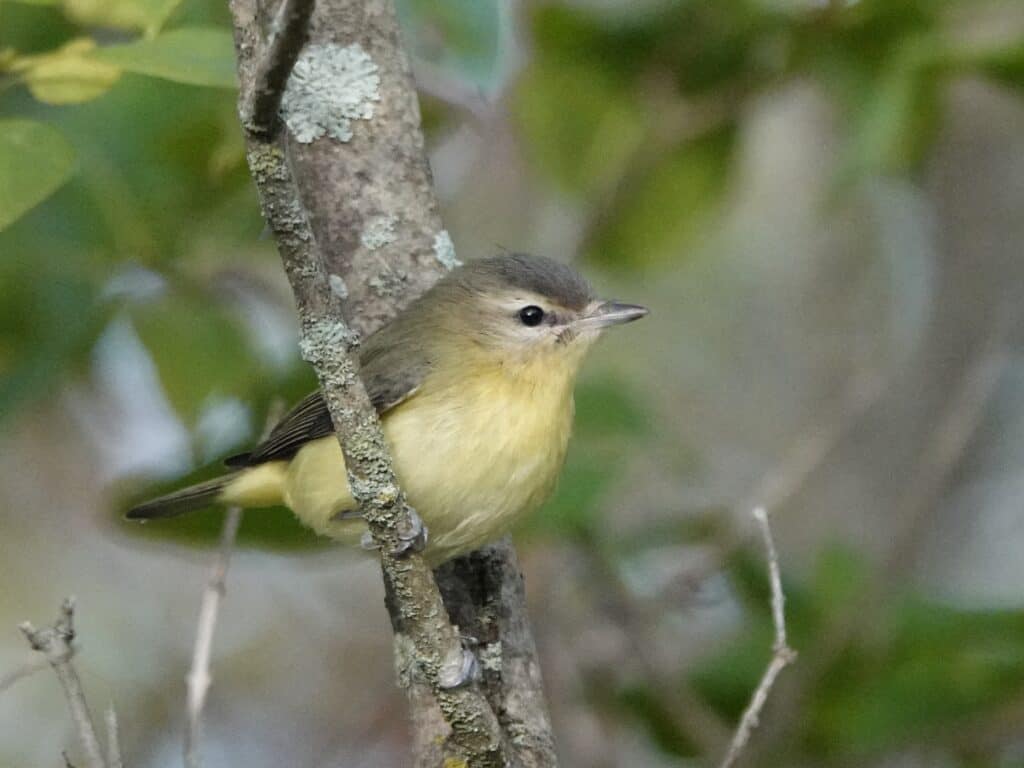
Philadelphia Vireo 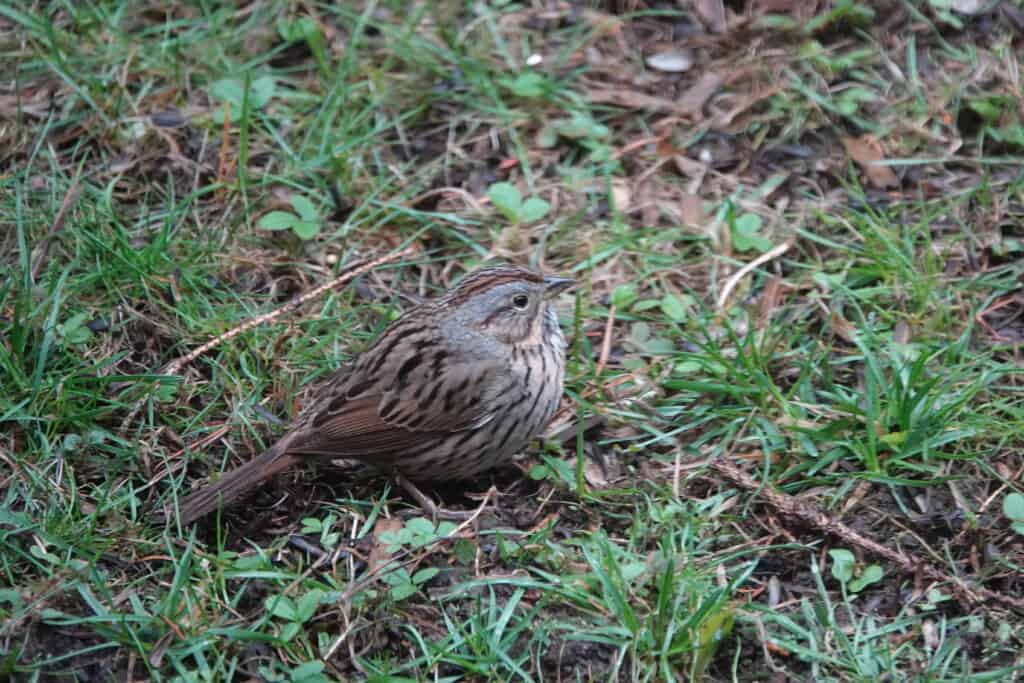
Lincoln’s Sparrow 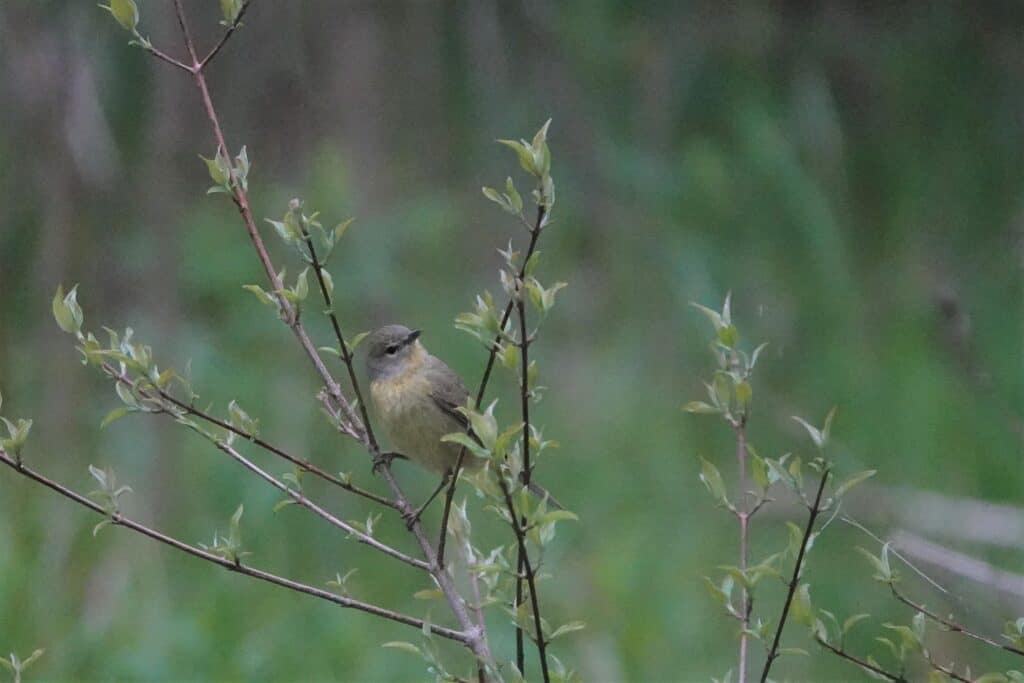
Orange-crowned Warbler
I must also thank Tim Dyson, a regular contributor to this column, for helping me find a northern saw-whet owl near Warsaw. Tim was able to get the owl to answer back in response to a whistling sound he made. This tiny owl brought me to 186 and only 14 to go.
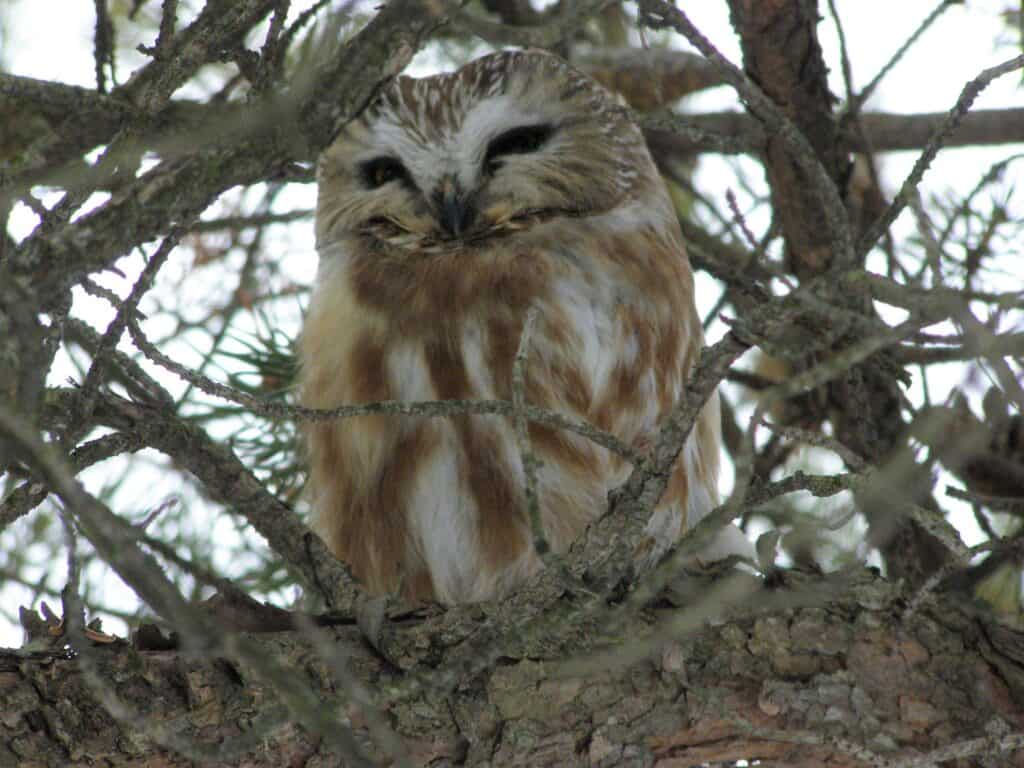
On October 2, we left for BC and didn’t return until the 26th. However, some frenzied birding in the last few days of the month allowed me to reach 195. The most unexpected find was a locally-rare white-rumped sandpiper at the Lakefield sewage lagoons.
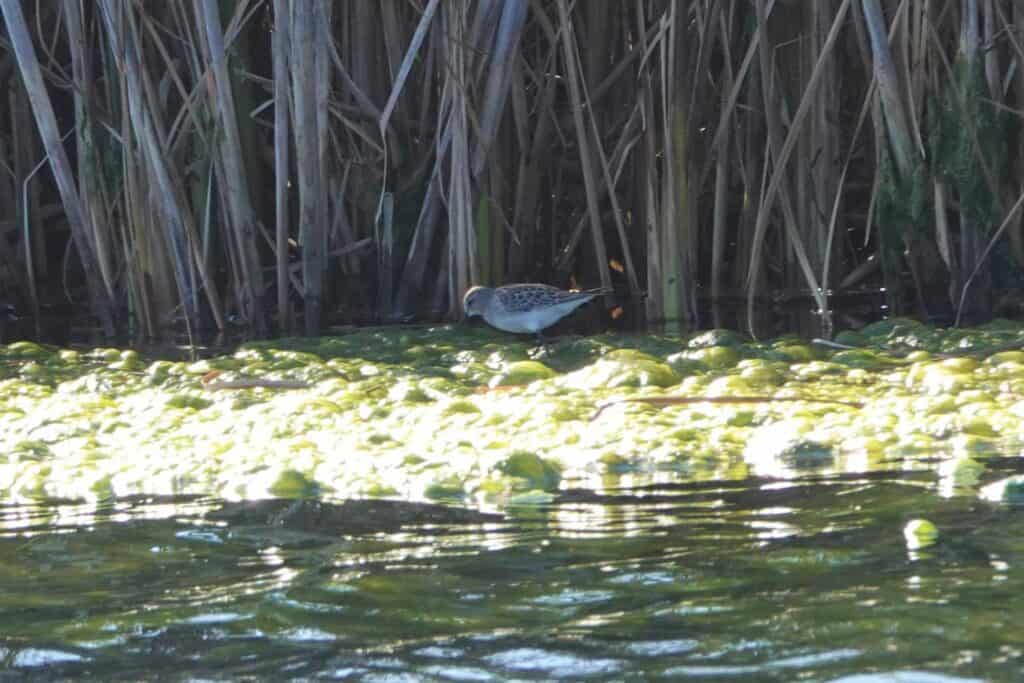
White-rumped Sandpiper 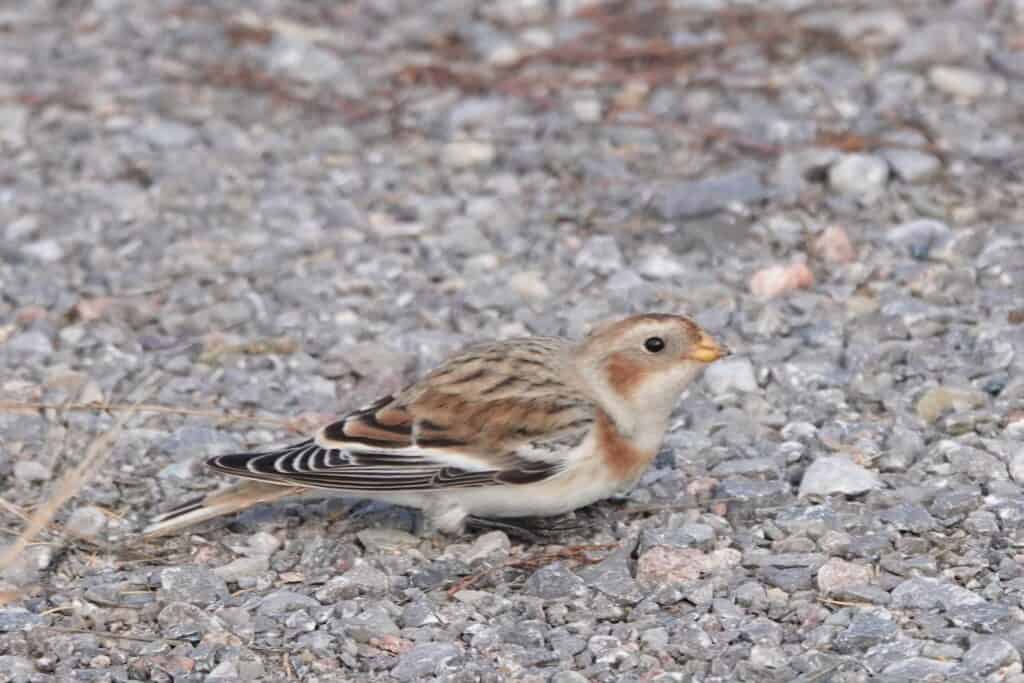
Snow Bunting 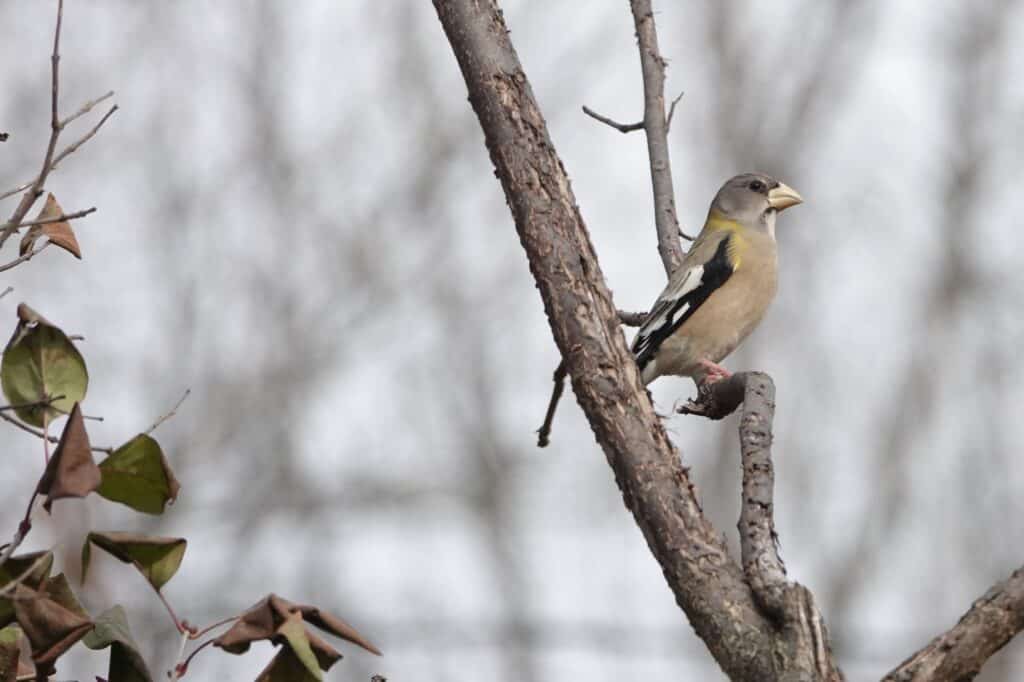
Female Evening Grosbeak 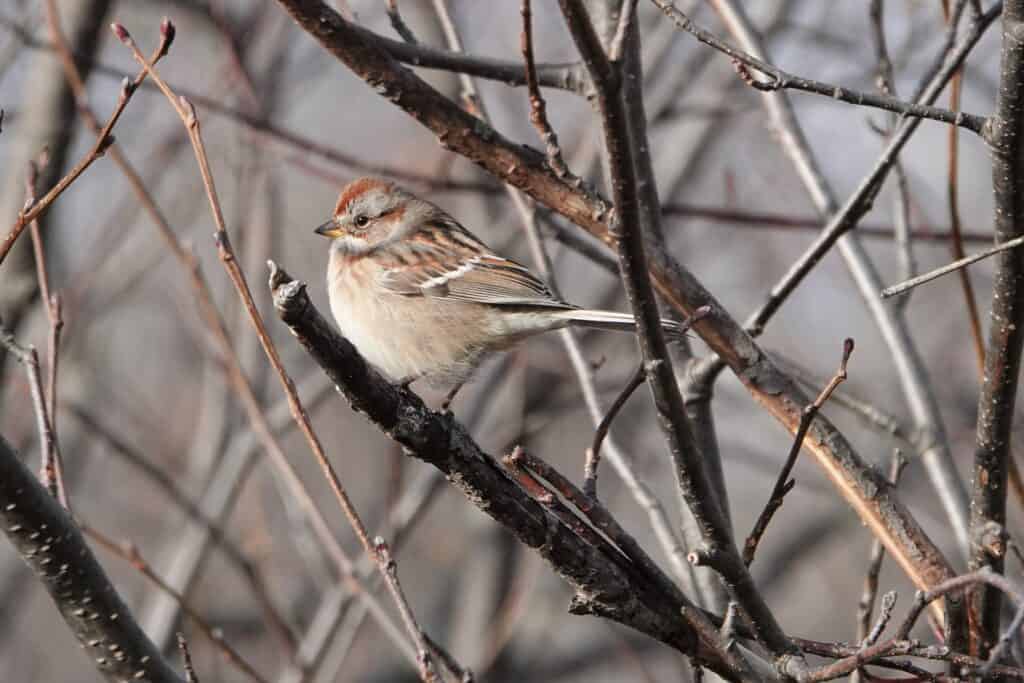
American Tree Sparrow
Late October and November sees the return of winter birds like snow buntings and northern shrikes. Some years – 2020 being one of them -winter finches like pine siskins, evening grosbeaks, American tree sparrows, and common redpolls also show up. Late fall also means peak waterfowl migration. Local birders head to destinations rich in ducks such as Pigeon Lake, Rice Lake, and the Lakefield sewage lagoons.
Sandy Point on Pigeon Lake was particularly generous with its birds. On my first trip there, I added a white-winged scoter, red-breasted merganser, and red-necked grebe. Thinking I might reach 200 courtesy of a golden eagle and northern goshawk, several of us headed up to the top of the ridge near Nephton and Petroglyph Provincial Park. The only new bird we found, however, was a pair of white-winged crossbills. Species number 199 for the year.
eBird then alerted me to the presence of two other scoter species at Sandy Point. This past Sunday, Chris Risley and I arrived there at first light. The lake was perfectly calm, loons were calling, and there was no shimmering heat distortion when looking at distant birds through our scopes. Within minutes, Chris found what looked like a female surf scoter with two similar-looking immature white-winged scoters. The identification was only clinched when the surf scoter raised its wings, and we could see there was no white! Although no fireworks went off or prize money handed out, there was real satisfaction in reaching my goal.
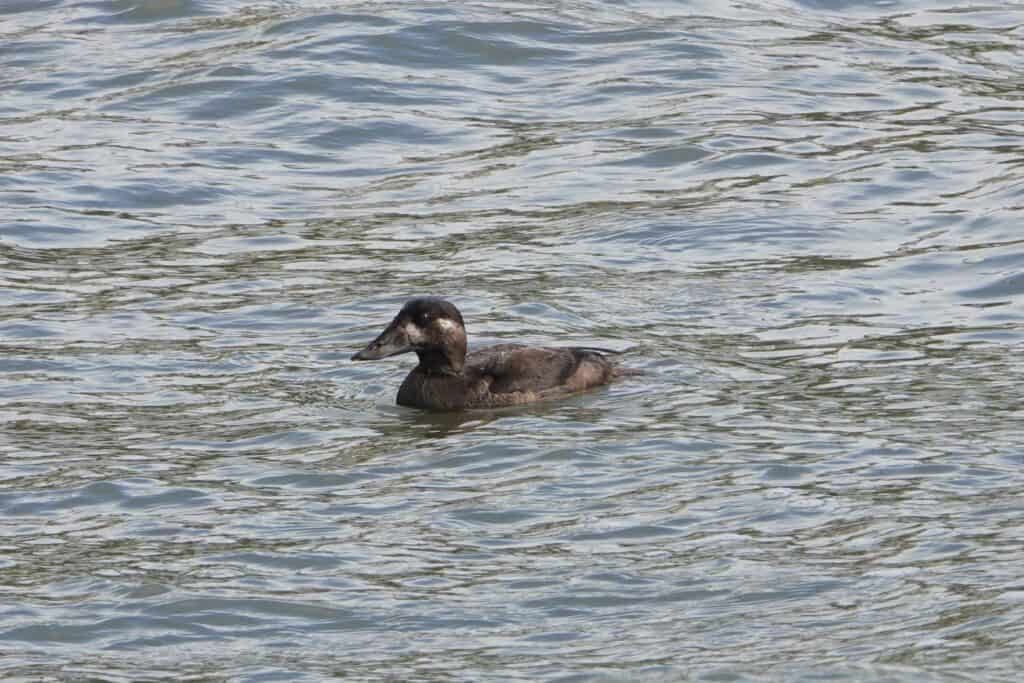
Summary
Among the 200 species I saw were 24 waterfowl, 16 raptors, 15 shorebirds, 7 woodpeckers, 8 flycatchers, 5 vireos, 6 swallows, 4 wrens, 6 thrushes, 7 finches, 14 sparrows, and 27 warblers. As for locations, I actually found the greatest number of new species (24) right in my own yard. And, just to be clear, I’m not claiming any kind of title here. Fourteen other local birders have seen more than 200 species with Dave Milsom leading the way at 236.
How many species I eventually end up with is an open question. Relatively common birds like horned larks have still eluded me. Whatever the final tally is, I have gained a better understanding of the impressive diversity of birds in Peterborough County and where to find them. But my biggest takeaway is just how lucky we are to live here.
CLIMATE CRISIS NEWS
To be inspired to take an active role in addressing the climate crisis, people need to feel alarmed at how serious it is but also feel encouraged by the many reasons for hope, hence these news items from both perspectives.
ALARM: According to the “New Energy Outlook 2020” report https://about.bnef.com/new-energy-outlook/, the world is still on track to warm by 3.3 degrees Celsius by 2100. To keep global warming well below 2 degrees C, emissions need to fall 10 times faster, at 6 percent per year until 2050. This would require investing tens of trillions of dollars in clean energy between now and 2050
HOPE: One of Joe Biden’s most exciting ideas is to bring back the Great Depression’s massive work program known as the Civilian Conservation Corps. It would put millions of Americans back to work in projects such as restoring ecosystems, managing forests to reduce wildfire risk, removing invasive species, and updating infrastructure in public natural spaces. It would also bring a huge number of people closer to nature. Learn more about it at https://www.wired.com/story/the-case-for-reviving-the-civilian-conservation-corps/
For local climate news and ways to take action, go to https://forourgrandchildren.ca/ and subscribe to the newsletter.